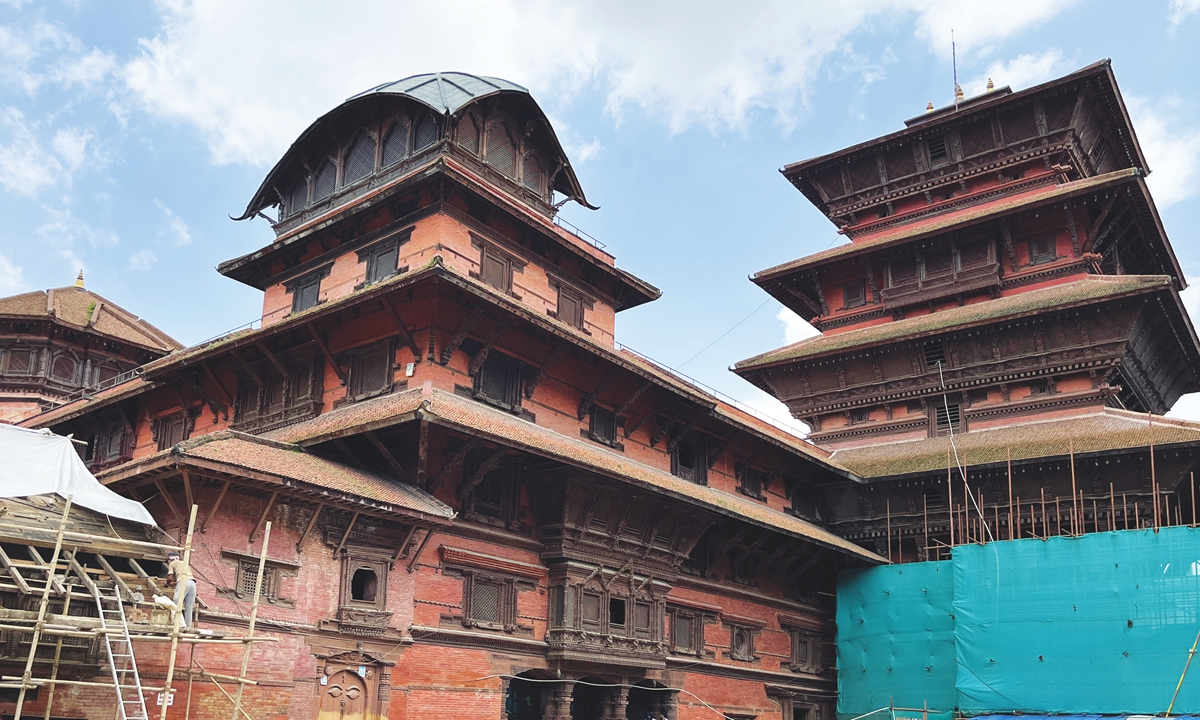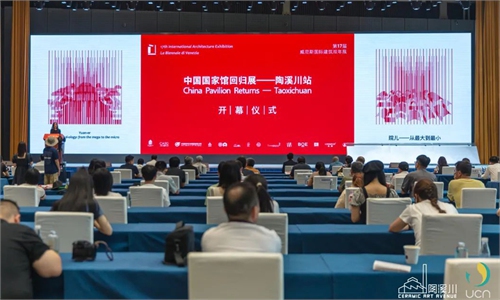ARTS / ART
Chinese restorers gaining global recognition through effort, experience
Bringing back the past

A project of the Chinese Academy of Cultural Heritage (CACH) to restore the quake-hit Basantapur Palace in Durbar Square in Nepal Photos: Courtesy of the CACH
At the heart of Kathmandu Durbar Square, the legendary Nepali Basantapur Palace still retains its original appearance from more than 300 years ago. Looking at the building, you would never guess that in 2015 a disastrous earthquake had once nearly destroyed the palace.
On September 12, eight days ahead of Nepal's National Day, Chairman of China's National People's Congress Standing Committee Li Zhanshu kicked off an official four-day goodwill visit to Nepal.
During Li's itinerary he visited the post-quake Durbar Square (currently still under reconstruction), the location of the nine-story Basantapur Palace. The successful restoration of this heritage site is a perfect example of the two countries' cultural cooperation and exchanges, as the Chinese Academy of Cultural Heritage (CACH) spent the past five years to help rebuild the temple with the support of local Nepali experts.
85 percent original
From time to time, primary students on school trips visit this world cultural heritage site in Nepal's capital city. Some of them were still infants when the 2015 Gorkha earthquake hit the area, leaving 9,000 people dead and numerous buildings destroyed, including the heritage buildings at Durbar Square. "About 80 percent of the walls were deformed and cracked, and a large number of wooden components were damaged and scattered about," the CACH said in a report describing the Basantapur Palace after the earthquake.
Kathmandu is located on the alluvial plains of the southern foothills of the Himalayas, where the monsoon season brings abundant rainfall every year from May to September. Restoration of the Basantapur Palace was a major priority since the exposed interior would have been further damaged by these rainstorms.
How to restore this centuries-old temple to its original appearance was a major challenge. Chinese ancient architecture experts determined to do all they could to make use of the original parts of the building that had been broken off and scattered around the area due to the earthquake. According to restorers who worked on the project, about 85 percent of the palace's original components were able to be recovered and used in the reconstruction.
The wood carvings on the temple windows represent the most superb craftsmanship of Nepal. Carrying both religious and cultural meaning, no two windows are completely alike.
In order to preserve these windows and their artistic value, the CACH brought in craftsmen from a long line of Nepali woodcarving families.
After carefully looking at pictures from before the earthquake, the Nepalese side would draw plans for the missing parts and then the team would make those parts to restore the window to its original appearance.
Commenting on the restoration, Damodar Gautam, director general of Nepal's Department of Archaeology, told the Global Times that the Chinese side works hard to stay true to the original appearance of the palace.
"They were very careful when it came to maintaining the authenticity, integrity and value of this world heritage site," Gautam said.
Gaining experience
The global reputation of the Chinese ancient building restoration team began to grow after they worked on several projects in Angkor, Cambodia nearly three decades ago. Built in the mid-12th century, the Chau Say Tevoda is a temple located by the ancient capital Angkor Thom's east gate. "The layout of the building complex is symmetrical. The walls and bases of each individual building are covered with carvings, among which 34 fairy-like statues are very lifelike, showing the superb level of the Khmer people's artistic skills," the CACH described in their study.
This combination of religion and art lay in ruins 30 years ago. In 1993, over 30 countries and international organizations including Cambodia, France, Japan, Italy, China and UNESCO started the largest-ever international cooperation in cultural heritage protection in Cambodia.
A protection team gathered experts in archaeology, geology, cultural history and architectural art to restore the site. The work proved very challenging as the team ran into problems arising from the extremely hot and humid climate and a lack of building materials due to a recession caused by more than 20 years of war.
People were initially hesitant about what contributions the Chinese restorers could make.
"We were once questioned about what we could contribute due to a lack of advanced technology and strong financial support," Gu Jun, a senior engineer at CACH, told the Xinhua News Agency.
"But we proved ourselves by replying on our experience."
In April 2022, Chinese efforts in the Chau Say Tevoda temple project were recognized by Long Kosal, deputy director-general and spokesman for Cambodia's Apsara National Authority.
"It was a process of mutual cooperation and continuous progress at the international level. The experience and technology we attained while abroad, such as 3D scanning, were used in cultural relic protection projects both at home and abroad later on," Liu Su, a Hunan University architecture professor who specializes in restoration, told the Global Times.
Yuan Mengxi, a member of China's restoration project in Nepal, contributed to the story

